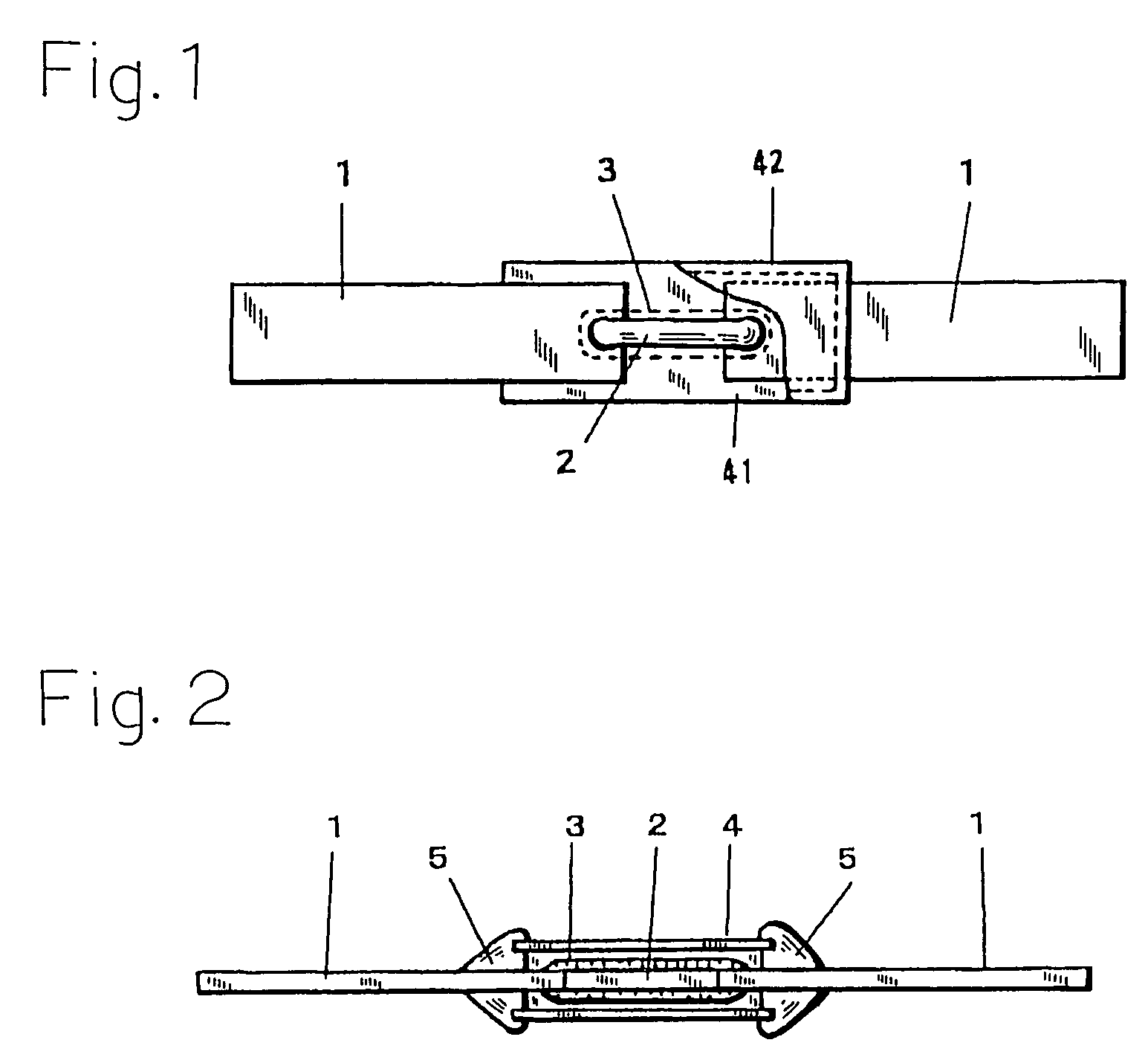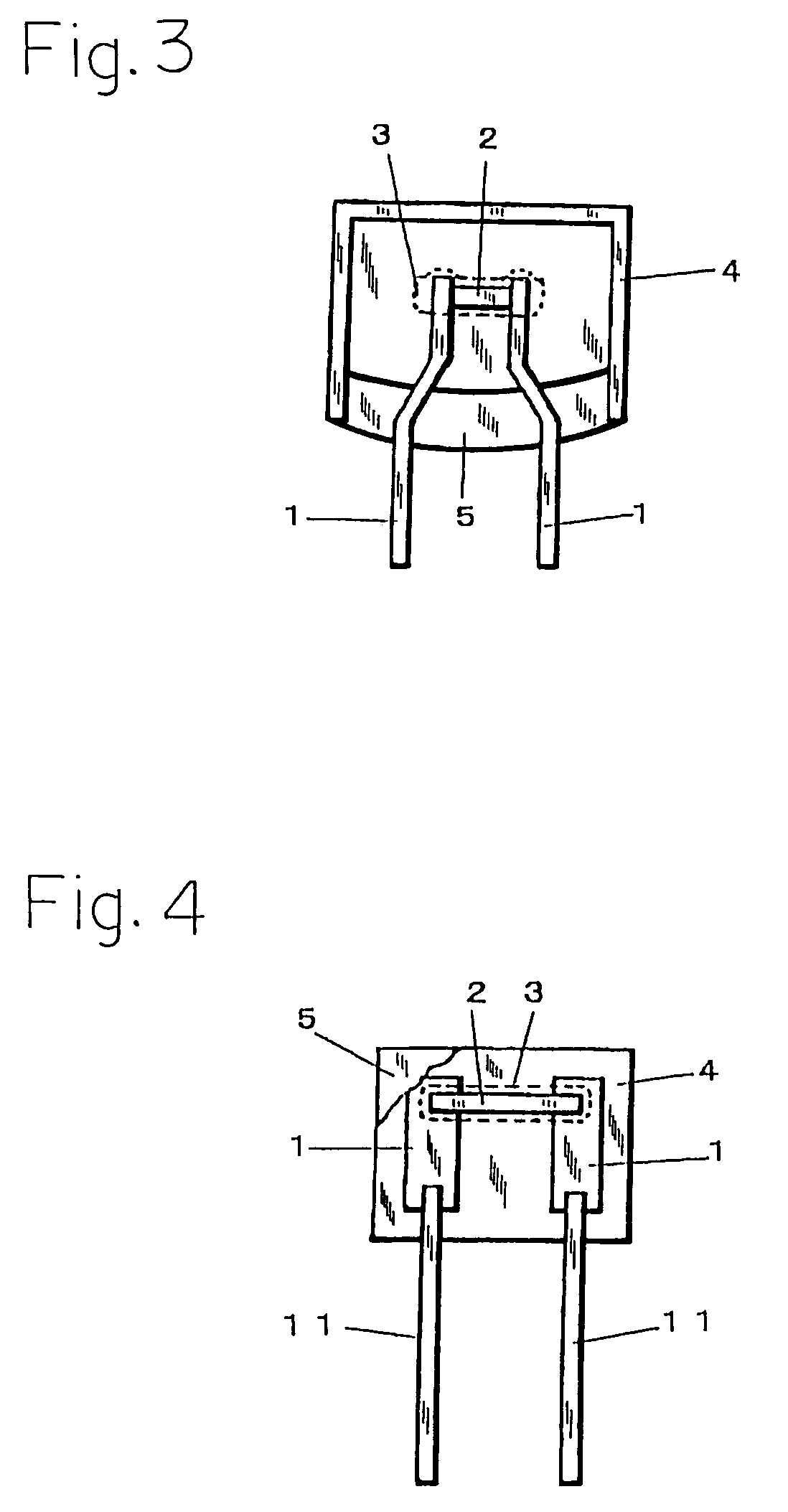Alloy type thermal fuse and wire member for a thermal fuse element
a technology of alloy type thermal fuse and wire member, which is applied in the direction of manufacturing tools, welding/cutting media/materials, and manufacturing tools, etc., can solve the problems of local and sudden temperature rise, physical destruction, and intense scattering of molten alloy or charred fluxes, so as to reduce the specific resistance of the fuse element and increase the capacity of the alloy type thermal fuse. , the effect of high drawability
- Summary
- Abstract
- Description
- Claims
- Application Information
AI Technical Summary
Benefits of technology
Problems solved by technology
Method used
Image
Examples
example 1
[0076]In the example, alloy type thermal fuses of the cylindrical case type having a fuse element of a composition of 48% Sn, 2% In, and the balance Bi were used.
[0077]Although the thermal fuses were operated under the above-mentioned overload application, the fuses were able to be operated without causing a breakage. The insulation stability after an operation was as follows. The insulation between lead conductors withstood 2×the rated voltage (500 V) for 1 min. or longer, that between the lead conductors and the outer face of the cylindrical case withstood 2×the rated voltage+1,000 V (1,500 V) for 1 min. or longer, the insulation resistance between the lead conductors when a DC voltage of 2×the rated voltage (500 V) was applied was 0.2 MΩ or higher, and that between the lead conductors and the outer face of the cylindrical case was 2 MΩ or higher. As a result, the insulation stability was ◯.
[0078]The fuse element temperature at an operation of the thermal fuse is 135° C., and the ...
examples 2 to 5
[0082]The examples were conducted in the same manner as Example 1 except that the amount of Sn in Example 1 was changed as listed in Table 1 and, in accordance with the change, the amount of Bi was changed.
[0083]In all the examples, in the same manner as Example 1, even when the thermal fuses were operated under the abovementioned overload application, no breakage occurred, and the insulation stability after an overload operation was ◯.
[0084]In all the examples, the element temperature at an operation is lower than the liquidus temperature (by 11 to 13° C.), and it is apparent that the fuse element is broken in the solid-liquid coexisting region. The reason why the insulation stability after an operation is ◯ without causing a breakage during the operation under the overload application is estimated as follows. In the same manner as described above, the division of the fuse element is performed in the wide solid-liquid coexisting region. Therefore, the occurrence of an arc immediate...
examples 6 to 9
[0088]The examples were conducted in the same manner as Example 1 except that the composition of the fuse element in Example 1 was changed as listed in Table 2.
[0089]In all the examples, in the same manner as Example 1, even when the thermal fuses were operated under the overload application, no breakage occurred, and the insulation stability after an overload operation was ◯.
[0090]In all the examples, the element temperature at an operation is lower than the liquidus temperature (by 10 to 12° C.), and it is apparent that the fuse element is broken in the solid-liquid coexisting region. The reason why the insulation stability after an operation is ◯ is identical with that described above.
[0091]In all the examples, the specific resistance of the fuse element is low, and, even under a high load current, self-heating can be sufficiently suppressed so that the thermal fuse can operate at a predetermined temperature.
[0092]Also the drawability of the fuse element in all the examples is ◯....
PUM
| Property | Measurement | Unit |
|---|---|---|
| liquidus temperature | aaaaa | aaaaa |
| liquidus temperature | aaaaa | aaaaa |
| operating temperature | aaaaa | aaaaa |
Abstract
Description
Claims
Application Information
 Login to View More
Login to View More - R&D
- Intellectual Property
- Life Sciences
- Materials
- Tech Scout
- Unparalleled Data Quality
- Higher Quality Content
- 60% Fewer Hallucinations
Browse by: Latest US Patents, China's latest patents, Technical Efficacy Thesaurus, Application Domain, Technology Topic, Popular Technical Reports.
© 2025 PatSnap. All rights reserved.Legal|Privacy policy|Modern Slavery Act Transparency Statement|Sitemap|About US| Contact US: help@patsnap.com



